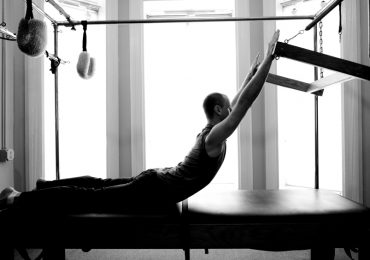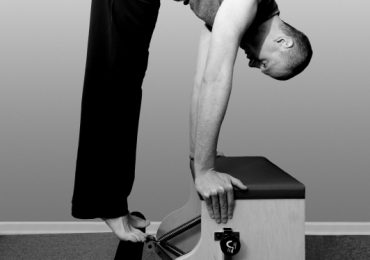How Physiotherapy Can Help With Postural Neck Pain & Chronic Whiplash?
I am going to focus this blog on two common types of neck pain that I see in my Downtown Toronto practice:
Postural Neck Pain and Chronic Whiplash.
Both of these conditions show similar movement problems and muscle imbalances. With these patients, we see over active muscles in the front and side of the neck. The muscles are tense and painful and look like they are pulling the neck forward from the upper back. The head is carried in a forward position creating a hump in the back of the neck. The upper back and neck muscles are also weak as well as the muscles that hold the shoulder blades. The imbalance causes different joint problems in the upper and lower neck joints. The neck constantly appears to be tense as it tries to carry the weight of the arms, as well as the head.
Postural Neck Pain is common with our Downtown Toronto office workers, who are sitting in front of computers. Chronic Whiplash Pain is common with those who had a neck injury after a car accident. A number of these patients do not recover well initially and then go on to develop muscle imbalances and poor control of their neck movements.
Overview of Types of Neck Pain.
There are different types of neck pain that require specific treatment approaches. The research shows that we need to classify types of neck pain, so that we can direct the right type of treatment. A pinched nerve needs to be treated differently from a chronic whiplash condition. I will write separate blogs on each of these types of neck pain but here is a brief description of each.
Acute whiplash/pain.
This can occur after a motor vehicle collision and is characterized by high levels of pain, loss of range of motion. These injuries should be assessed for possible fractures, and injury to blood vessels and nerves. A physiotherapy exam can determine if referrals to a doctor or imaging are necessary.
Mechanical Neck Pain.
This is usually caused by pain coming from the joints or soft tissues. Sometimes joints can become restricted or muscles irritated. Pain can refer to the head and shoulders and upper back.
Pain from a Pinched Nerve.
A nerve between the vertebra can become irritated or pinched. This causes pain, numbness and tingling into the arm and hand. A physiotherapy exam can determine which nerves are affected. The exam can also find out which part of the neck needs to be treated. Joint mobilization restores the normal mechanics to the joint and nerve.
Headache and neck pain.
Headache can arise from any of the above neck conditions. The headache can be treated by focusing on the neck. Restoring normal movement and mechanics will stop the pain from radiating to the head. A headache can arise from the irritated muscles or joints.
Postural Neck Pain and Chronic Whiplash.
We have combined Postural Neck Pain and Chronic Whiplash together as the symptoms and presentation are very similar. Patients who have a history of whiplash injury from a car accident develop similar problems to those who have postural neck pain. I will talk about each one and then how we treat them using a combination of Pilates and Physiotherapy techniques.
What is Postural Neck Pain ?
This condition is commonly seen with people who have developed a head forward position. It is can be caused by sitting at computers with poor posture. The muscles in the upper back and neck become weak. The muscles in the front of the neck become over-active and painful. If this continues for longer, the upper back becomes stiff. The neck tries to compensate and becomes irritated. The neck and upper back are dependent on one another for normal alignment and mechanics. The neck joints become more susceptible to other types of neck pain, such as mechanical neck pain and pinched nerves.
What is Chronic Whiplash?
Patients who have had pain from a whiplash injury for more than 3 months fall into this category. Whiplash injuries typically occur from a motor vehicle injury. I see many patients who have not responded well to the initial treatment. They still have reduced range of motion and pain. They also have muscle imbalances similar to the postural neck patient. They show increased use of the muscles in the front of the neck and the muscles in the back of the neck appear weak. Patients still have pain with movement and are often fearful about moving their neck.
How We Assess Postural Neck Pain and Chronic Whiplash.
We screen patients for any serious conditions that may require a referral to the doctor. Detailed questions about symptoms will tell us if this is the case. We also carry out standard tests on the joints and nerves to find out if there is anything else that needs a referral to the doctor. If the pain follows a fairly common pattern, this will guide the treatment approach. Visually a patients posture will give the most information. The muscles in the front and side of the neck will also feel very tense and will be quite tender. It will look like both arms are being held from the neck muscles. Pain is more localized to the neck and upper back area.
Whiplash and Pain.
If a whiplash injury is not treated properly, then normal movements can become coupled with pain. The pain doesn’t mean that the neck structures are still damaged. It means that pain has become a learned response, or sensitized, to normal movement. By restoring normal movement patterns and muscle balance, the pain will desensitize. Chronic pain is treated differently from an acute whiplash injury, where there is tissue damage.
How We Treat Chronic Whiplash and Postural Neck Pain.
Pilates and Physiotherapy for neck pain are an ideal combination. Neck pain is best treated with a holistic approach to find the root cause of the problem. Pilates looks at the wider picture to see how muscle imbalances may be causing the issue. Physiotherapy is able to diagnose and uses specific techniques to assess and treat the target area. Pilates-based rehabilitation focuses on strengthening the neck and upper back. Pilates also restores normal movement patterns. Pain can be treated more effectively using this combined approach.
Most of the research points to an exercise-based approach with some use of hands-on treatment. Massage and joint mobilizations can help to facilitate the correct movement patterns. Massage can help to relax over-active muscles. Then the weaker muscles can be retrained to hold the neck. We focus on normal range of motion of the neck and the spine of the upper back. If pain has become coupled with movement over time, we can slowly break this pattern. Persistent pain can be desensitized with graded exposure to movement and strengthening. Pain does not always mean that the area is damaged. In persistent pain the neck can just become hyper-sensitive. This happens if the neck is not rehabilitated properly. The muscles in the upper back and neck need to be strengthened, so that the tight muscles in the front don’t have to work so hard. Strengthening the shoulder-blade muscles also creates more support for the neck.
Sometimes fear of pain and just not knowing how to manage the neck can keep patients trapped in a pain cycle. Having the reassurance from your therapist is essential. We can guide you to move through pain, without worrying that it will make the neck worse.
Damian Wyard is a Registered Physiotherapist and Pilates Instructor in Downtown Toronto. He uses the classic Pilates equipment to provide supervised rehabilitation for more effective results. He can be reached at info@pilates4physio.ca and 647 499 6685.



